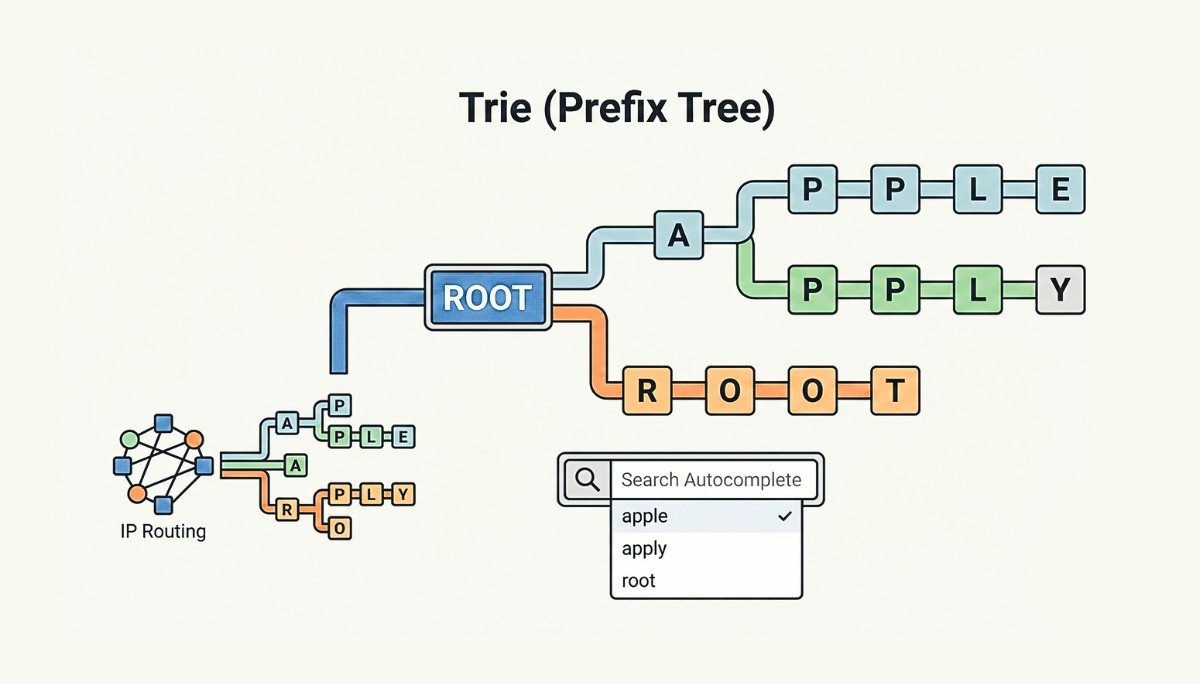Time Series Forecasting: ML & Deep Learning Made Simple
By
Liz Fujiwara
•
Jul 29, 2025
Time series analysis in machine learning plays a crucial role in uncovering patterns, trends, and seasonality within sequential data. This approach involves using historical observations to forecast future values, an essential capability across industries like finance, retail, healthcare, and logistics. Whether it's predicting stock prices, anticipating product demand, or optimizing resource allocation, time series forecasting enables businesses to make smarter, data-driven decisions. In this article, both traditional statistical methods and modern machine learning models for time series analysis will be explored. We will also cover the essential components of a forecasting system that help ensure reliable performance in real-world applications.
Key Takeaways
Time series data is categorized into stationary and non-stationary types, which is essential for identifying patterns such as trends and seasonality across various industries.
A variety of forecasting techniques, including classical statistical methods like ARIMA and modern machine learning models, are used to improve predictive accuracy in time series analysis.
Best practices, such as thorough preprocessing and the integration of domain knowledge, are important for maintaining data integrity and optimizing forecasting outcomes across different sectors.
Understanding Time Series Data

Time series data is a type of data sampled at consistent intervals over time, such as days, months, or years. It comprises two main types: stationary and non-stationary data. Stationary data has consistent statistical properties over time, while non-stationary data exhibits trends or seasonal variations. Observed data also plays a key role in this analysis.
The essence of time series analysis lies in understanding how a dependent variable changes over time, using time as the reference point. Key components include:
Trends: Long-term upward or downward movements that reveal overall direction.
Seasonality: Regular, predictable patterns that recur at specific intervals, such as holiday sales spikes.
Irregular variations: Unpredictable changes caused by unexpected events or anomalies.
Visualizing time series data is crucial for identifying these patterns. This typically involves plotting the data on a line graph, with time on the horizontal axis and variable values on the vertical axis. Such visualization helps data scientists and analysts quickly detect trends, seasonal components, and potential anomalies.
Working with time series data presents challenges, including missing data points, irregular intervals, and the complexity of decomposing real-world data into its seasonal and trend components. Addressing these issues is essential for producing accurate forecasts and making informed decisions.
Key Techniques in Time Series Analysis

Time series analysis employs a variety of statistical techniques to identify patterns and trends over time. These techniques range from classical statistical methods to modern machine learning models, each with its strengths and applications. Together, they enable data scientists to uncover hidden patterns and make accurate predictions across a range of domains.
Classical statistical methods, such as ARIMA and SARIMA, have long served as the foundation for time series forecasting. These models are well-suited for handling both stationary and non-stationary data, making them versatile tools for analyzing temporal patterns.
In contrast, machine learning models offer advanced capabilities for capturing complex relationships and dependencies in large datasets. By leveraging algorithms such as XGBoost, LSTMs, and other deep learning architectures, these models enhance the forecasting process beyond the limitations of traditional approaches.
Classical Statistical Methods
Classical methods in time series forecasting have stood the test of time, demonstrating effectiveness across a wide range of applications. The ARIMA model, short for Autoregressive Integrated Moving Average, is one of the most widely used statistical models for time series analysis. It combines autoregressive and moving average components to model both stationary and non-stationary data.
The Box-Jenkins Method offers a systematic approach to identifying, estimating, and validating ARIMA models. This methodology aids in selecting the appropriate parameters to ensure accurate and reliable forecasts.
An important extension of ARIMA is the Seasonal ARIMA (SARIMA) model, which incorporates seasonal components to account for recurring patterns in the data. These classical techniques provide robust solutions for time series forecasting, particularly when the data exhibits clear trends and seasonality. They also serve as a strong foundation for evaluating more advanced machine learning models.
Machine Learning Models
Machine learning models have transformed time series forecasting by enabling the processing of vast amounts of data and capturing complex, nonlinear patterns. Decision tree-based models, like random forests and gradient boosting machines, are popular due to their interpretability, strong predictive performance, ability to model nonlinear relationships, and capacity to manage interactions between variables. These characteristics make them well-suited for a wide range of forecasting tasks.
Neural networks, particularly recurrent neural networks (RNNs), excel at capturing temporal dependencies in time series data. Thanks to their ability to retain memory of previous inputs, RNNs are effective for sequence-based tasks like predicting stock prices using historical market data. Another common architecture, the multi-layer perceptron (MLP), is frequently employed for forecasting applications such as future sales figures. Various neural network models can further improve prediction accuracy by modeling intricate data relationships.
The key advantages of machine learning models lie in their capacity to uncover hidden dependencies and handle large, complex datasets. This often results in more accurate forecasts and the discovery of insights that traditional statistical methods may overlook, empowering data scientists to build more precise forecasting systems.
Preprocessing Time Series Data
Preprocessing is a critical step in time series forecasting, ensuring the integrity and quality of the data used for analysis. A common challenge is handling missing values, which can disrupt the sequential nature of time series data. Time-based interpolation is frequently employed to impute these missing points, preserving the continuity of the dataset. Traditional imputation methods often fall short because they do not account for the temporal dependencies inherent in time series data.
Feature engineering is another essential preprocessing step, transforming raw data into meaningful features that improve model input and forecasting accuracy. Key techniques include:
Detrending which removes long-term trends to focus on short-term fluctuations.
Deseasonalizing, which addresses seasonal patterns during preprocessing.
Scaling, which standardizes data to a consistent scale and enhances model performance.
Ensuring data stationarity is crucial for effective time series analysis, as stationarity means the statistical properties of the data remain consistent over time. Important techniques include:
Differencing, which subtracts previous values from current ones to stabilize the mean.
Statistical tests like the Augmented Dickey-Fuller (ADF) and Kwiatkowski-Phillips-Schmidt-Shin (KPSS) tests, used to determine stationarity.
Correcting inconsistencies and outliers during data preparation.
Meticulous preprocessing lays a solid foundation for forecasting models, leading to more reliable and accurate predictions.
Implementing Deep Learning for Time Series Forecasting

Deep learning has emerged as a powerful approach for addressing complex time series forecasting challenges. RNNs are a primary architecture in this domain, specifically designed to handle sequential data by maintaining memory of previous inputs. This allows RNNs to capture temporal dependencies, making them well-suited for time series analysis.
Long Short-Term Memory (LSTM) networks, an advanced type of RNN, incorporate memory cells and gating mechanisms to better control the flow of information. LSTMs are particularly effective at retaining long-term dependencies in data, a critical factor for accurate forecasting. They are often used for multi-step forecasting, where the model predicts several future points based on historical sequences.
By leveraging deep learning models, data scientists can build predictive systems capable of capturing intricate patterns in time series data, ultimately improving forecasting accuracy and expanding the range of applications.
Evaluating Forecast Accuracy
Evaluating the accuracy of time series forecasts is essential to ensure the reliability and effectiveness of predictions. Common metrics used for this purpose include Mean Squared Error (MSE), Root Mean Squared Error (RMSE), and Mean Absolute Percentage Error (MAPE). Among these, a lower MAPE typically indicates better forecast accuracy, making it a preferred metric in many applications.
Cross-validation techniques tailored for time series data are critical for robust model evaluation. Unlike traditional cross-validation methods, time series cross-validation must preserve the order of observations to respect temporal dependencies.
Blocked cross-validation further mitigates data leakage by introducing gaps between training and validation sets, thereby reducing the risk of overfitting. Nested cross-validation takes this a step further by averaging errors across multiple train/test splits, offering a comprehensive evaluation of forecast accuracy.
These cross-validation techniques are vital for assessing the generalization ability of forecasting models and accounting for random variations.
Real-World Applications of Time Series Forecasting

Time series forecasting finds applications across a wide range of industries, each leveraging predictive analytics to inform decisions and optimize operations. Common sectors utilizing time series forecasting include finance, supply chain management, production, and inventory planning. These examples highlight the versatility and importance of time series analysis in predicting future values and guiding business strategies.
From stock price forecasting to weather prediction, time series analysis empowers businesses to make data-driven decisions by leveraging historical data to anticipate future trends. This is essential for optimizing resources, mitigating risks, and improving overall efficiency.
The following subsections explore specific applications in retail and e-commerce, finance and trading, and manufacturing.
Retail and eCommerce
In the retail and e-commerce sector, time series forecasting is a powerful tool for predicting customer demand and managing inventory efficiently. Retailers analyze historical sales data to forecast future demand, ensuring the right stock levels to meet consumer expectations. For example, Walmart leverages time series forecasting techniques to align inventory with customer demand, reducing waste and enhancing customer satisfaction.
Accurate demand forecasting enables retailers to optimize their supply chains, minimizing both stockouts and overstock situations. This not only boosts sales outcomes but also improves the overall shopping experience. By applying time series analysis, retailers can make data-driven decisions that reflect market trends and consumer behavior.
Effective demand forecasting is essential for maintaining a competitive edge in retail, helping businesses anticipate market shifts, manage resources efficiently, and adapt to the needs of their customers.
Finance and Trading
In the finance and trading sector, time series analysis is a vital tool for assessing market risks and making informed investment decisions. Financial institutions utilize time series forecasting to predict stock prices, analyze market trends, and estimate potential losses within investment portfolios. For instance, Goldman Sachs employs time series analysis to evaluate market risk and prepare for potential fluctuations.
Time series forecasting allows traders and investors to make data-driven decisions, reducing uncertainty associated with market movements. By examining historical data and uncovering patterns, financial professionals can develop strategies that optimize returns while managing risk effectively.
Manufacturing
In the manufacturing industry, predictive maintenance is a key application of time series forecasting. By analyzing historical equipment performance data, manufacturers can anticipate potential failures and schedule maintenance proactively. This approach improves productivity while reducing downtime and maintenance costs.
Time series forecasting also supports resource allocation and process optimization. By predicting future trends and identifying long-term dependencies, manufacturers can see that operations run smoothly and efficiently.
Best Practices for Effective Time Series Forecasting

To achieve optimal results in time series forecasting, it is essential to follow best practices and incorporate domain knowledge. Adhering to good practices ensures forecasts are accurate and reliable, providing valuable insights for decision-making. Meanwhile, domain knowledge enhances machine learning models by capturing industry-specific nuances.
While classical time series methods may fall short in rapidly changing environments, machine learning–driven forecasting offers advanced capabilities to handle complex patterns and dynamic data. For example, companies like Walmart leverage accurate time series forecasts to optimize operations and adapt to shifting customer demand.
Avoiding common pitfalls in forecasting involves addressing data quality issues, selecting appropriate models, and validating them rigorously. By following these best practices, data scientists can improve model performance and generate dependable predictions.
Introduction to Fonzi
Fonzi is a curated AI engineering talent marketplace that connects companies with top-tier, pre-vetted AI engineers through its recurring hiring event, Match Day. Designed to support both early-stage startups and large enterprises, Fonzi helps organizations find the right talent to advance their AI initiatives. Its structured approach enables companies to efficiently identify and hire the best candidates to meet their specific needs.
Whether making a first AI hire or scaling to the 10,000th, Fonzi streamlines the hiring process by providing access to elite AI engineers ready to contribute to impactful projects. By leveraging Fonzi, companies can build their AI team efficiently.
How Fonzi Works
Fonzi employs structured evaluations to ensure candidates are assessed fairly and effectively. Its hiring events offer a transparent and efficient process that reduces the risk of hiring mismatches. Built-in fraud detection mechanisms further enhance the integrity of the process by verifying that only authentic, qualified candidates are considered.
Bias auditing is a key component of Fonzi’s approach, designed to minimize discrimination throughout candidate selection. Regular audits of evaluations help maintain objectivity and further reduce biases in hiring decisions.
Why Choose Fonzi for Hiring AI Engineers?
Fonzi is an efficient talent marketplace that connects companies with elite AI engineers. Key features include:
A structured ‘Match Day’ process that streamlines hiring for AI roles, enabling quick and informed decisions.
Advanced AI tools for effective candidate sourcing and evaluation.
A fast, consistent, and scalable recruiting process.
This improves the candidate experience by offering personalized job recommendations and timely communication. Engineers gain access to multiple job offers from prominent AI companies with just one application, ensuring strong matches and engagement. Most hires occur within three weeks, making Fonzi an ideal solution for companies aiming to quickly scale their AI teams.
Summary
Key aspects of time series analysis and forecasting include understanding time series data and applying essential techniques. Combining classical statistical methods with advanced machine learning models significantly enhances forecasting accuracy.
Critical preprocessing steps and the use of deep learning models further improve forecasting performance. Evaluating forecast accuracy through appropriate metrics and cross-validation techniques is vital to ensure reliable predictions. Real-world applications across industries demonstrate the practical value of these methods in guiding business decisions and optimizing operations.
Additionally, Fonzi offers an innovative hiring approach that benefits both employers and candidates. By adopting best practices in time series forecasting, businesses can improve their decision-making and stay ahead in their industries.




